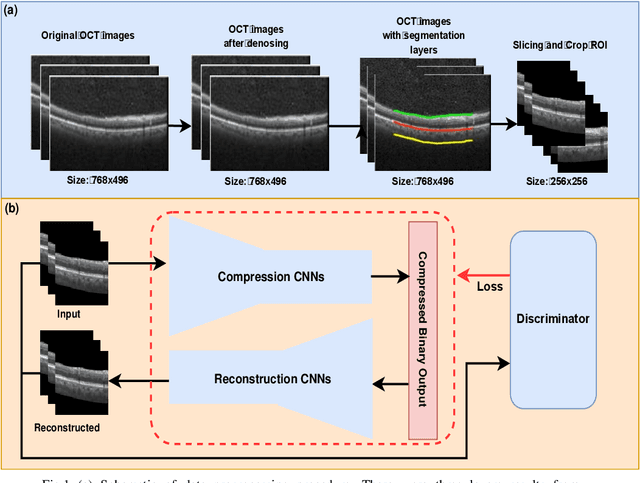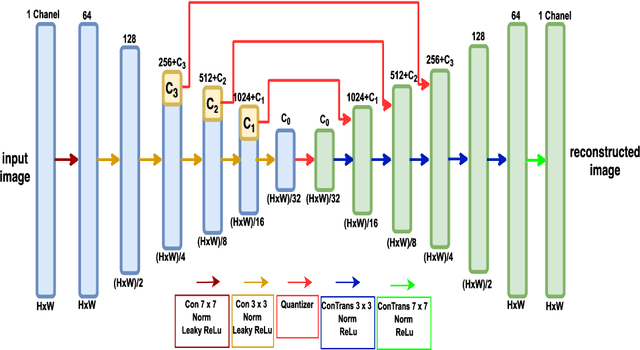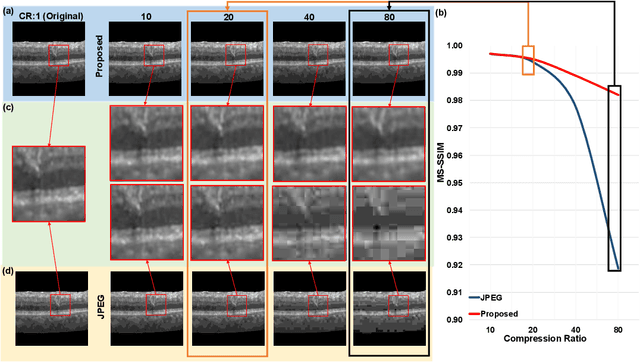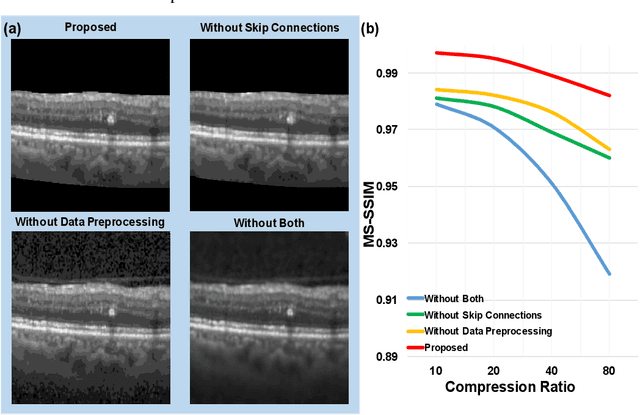Xingde Li
O-PRESS: Boosting OCT axial resolution with Prior guidance, Recurrence, and Equivariant Self-Supervision
Jan 06, 2024



Abstract:Optical coherence tomography (OCT) is a noninvasive technology that enables real-time imaging of tissue microanatomies. The axial resolution of OCT is intrinsically constrained by the spectral bandwidth of the employed light source while maintaining a fixed center wavelength for a specific application. Physically extending this bandwidth faces strong limitations and requires a substantial cost. We present a novel computational approach, called as O-PRESS, for boosting the axial resolution of OCT with Prior Guidance, a Recurrent mechanism, and Equivariant Self-Supervision. Diverging from conventional superresolution methods that rely on physical models or data-driven techniques, our method seamlessly integrates OCT modeling and deep learning, enabling us to achieve real-time axial-resolution enhancement exclusively from measurements without a need for paired images. Our approach solves two primary tasks of resolution enhancement and noise reduction with one treatment. Both tasks are executed in a self-supervised manner, with equivariance imaging and free space priors guiding their respective processes. Experimental evaluations, encompassing both quantitative metrics and visual assessments, consistently verify the efficacy and superiority of our approach, which exhibits performance on par with fully supervised methods. Importantly, the robustness of our model is affirmed, showcasing its dual capability to enhance axial resolution while concurrently improving the signal-to-noise ratio.
Customized OCT images compression scheme with deep neural network
Aug 27, 2019



Abstract:We customize an end-to-end image compression framework for retina OCT images based on deep convolutional neural networks (CNNs). The customized compression scheme consists of three parts: data Preprocessing, compression CNNs, and reconstruction CNNs. Data preprocessing module reduces the speckle noise of the OCT images and the segments out the region of interest. We added customized skip connections between the compression CNNs and the reconstruction CNNs to reserve the detail information and trained the two nets together with the semantic segmented image patches from data preprocessing module. To train the two networks sensitive to both low frequency information and high frequency information, we adopted an objective function with two parts: A PatchGAN discriminator to judge the high frequency information and a differentiable MS-SSIM penalty to evaluate the low frequency information. The proposed framework was trained and evaluated on a publicly available OCT dataset. The evaluation showed above 99% similarity in terms of multi-scale structural similarity (MS-SSIM) when the compression ratio is as high as 40. Furthermore, the reconstructed images of compression ratio 80 from the proposed framework even have better quality than that of compression ratio 20 from JPEG by visual comparison. The testing result outperforms JPEG in term of both of MS-SSIM and visualization, which is more obvious as the increase of compression ratio. Our preliminary result indicates the huge potential of deep neural networks on customized medical image compression.
 Add to Chrome
Add to Chrome Add to Firefox
Add to Firefox Add to Edge
Add to Edge